Pamir Highway: Riding on the Roof of the World
Back home again after his memorable trip to Kyrgyzstan and Tajikistan, Alan shares the highlights of his 4,000km Pamir Highway adventure and reviews how the Dirtsack Longranger Pro panniers performed in some extreme conditions.
This year I’ve been fortunate enough to be able to put a large tick against one of the many things on my bucket list: riding the Pamir Highway. Also known as the “Roof of the World”, this ancient road runs between Uzbekistan and Kyrgyzstan, traversing the highlands of Tajikistan and cutting through the Pamir mountains. With several high passes at over 4,000m, and rarely dropping below 3,000m, its roof of the world moniker is well earned. The road surface varies from fairly decent tarmac to gravel, dirt and rocks. Since the collapse of the Soviet Union, the road’s maintenance is nobody’s priority and large sections of it have washed away completely.
Seeing the Pamir range was previously almost impossible, because of the close borders with China, Afghanistan and Pakistan. Even now you’re still required to have a special visa called a GBAO (Gorno-Badakhshan Autonomous Province).
Not having had the luxury of enough time to ride all the way from the UK and back again, I used the motorcycle transportation services of ADVfactory, based in Poland. They’d collect my bike, ship it to Bishkek in Kyrgyzstan, and arrange shipping back again at the end of the trip. I usually prefer to travel independently, but the ADVFactory team were also offering a tour that pulled in the same route I’d sketched out so it made sense to join them and have some company.
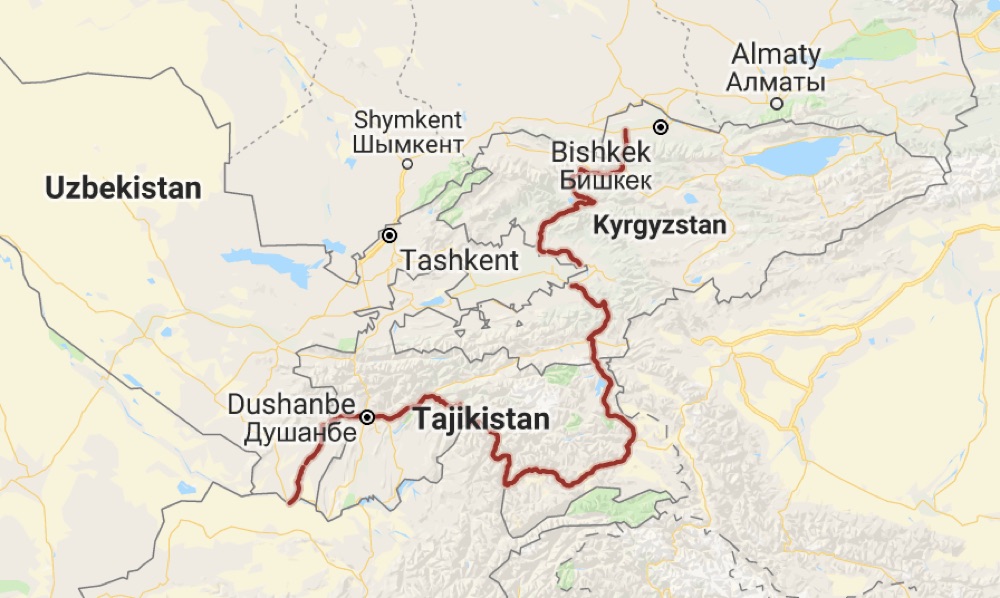
The route took us south from Bishkek towards the Pamirs, through “no mans land” along the Chinese border and into Tajikistan over the dizzying Ak Baital Pass at 4,750m. We then followed the beautiful Wakhan Corridor, waving at the people of Afghanistan across the Panj River, before heading north again over more spectacular passes and returning to Kyrgyzstan via the beautiful Lake Issyk-Kul. Just some of the other unforgettable highlights of the trip include the Afghan bazaar in Khorog, the baths of the Bibi Fatima Zohra holy hot spring, and the ancient Yamchun fortress.
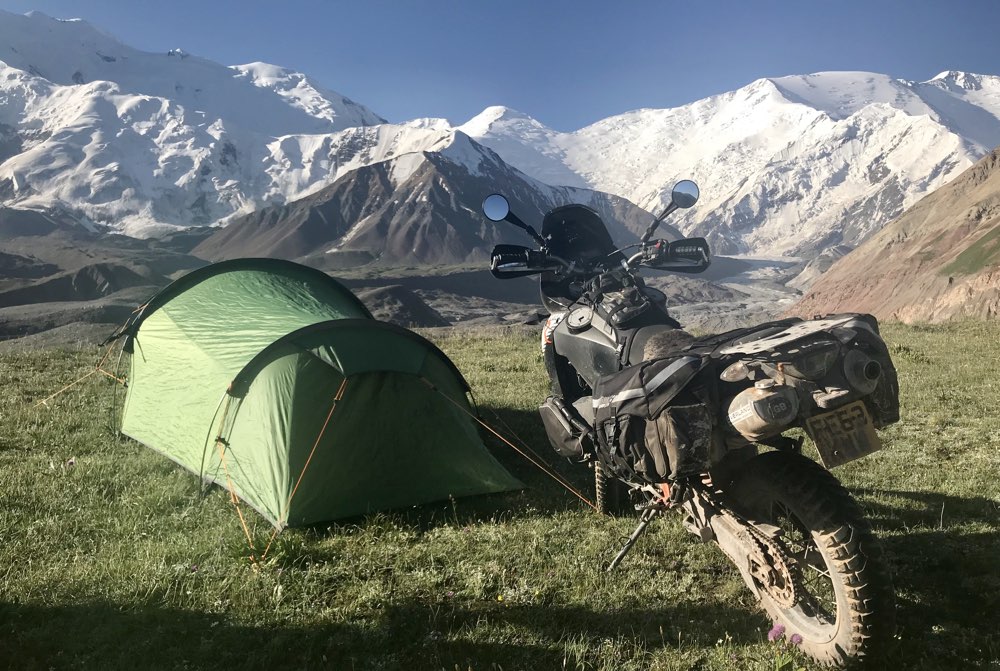
My KTM 990R is the ideal choice for a journey like this. In standard trim, other than a custom-made fuel tank, my prep consisted of fresh oil, filters, and a new pair of Mitas knobblies.
Deciding on what luggage to use, however, took a little more time. I have luggage racks and a set of hard panniers, but I knew this trip would involve a lot of rugged terrain so soft panniers seemed a better bet. I’m fortunate in that, as the UK importer of Dirtsack Luggage, I have many more options than most to choose from. For this trip I decided to give the newly re-designed Longranger Pros a thorough workout.
To begin with, I tried them over the pannier racks. While they’re flexible enough to fit, the overall width was roughly the same as the hard cases. For this trip I really wanted to travel light so I removed the racks and tried again, this time using them as a simple throw-over. Once I’d got the width of the centre bridge right they fell into place very easily. They stay in place with a clip to each pillion peg and a couple of rear straps that clip around the rear rack and tail section. Once adjusted to the right length, just undo four clips and you can lift the whole set off the bike to take into your hotel room – or yurt.

The updated design incorporates a waterproof roll bag in each 24 litre pannier side, plus three zipped side pockets. They also come with high-vis waterproof over-covers, which I took them on the trip but never actually used. Despite a couple of downpours, everything stayed perfectly dry. That said, I did make sure that all the pockets’ contents were things that wouldn’t matter if they did take a soaking: chain lube, tyre levers, small rain jacket, and so on. My clothes, wash kit, and sleeping bag all fitted easily into the rollbags.
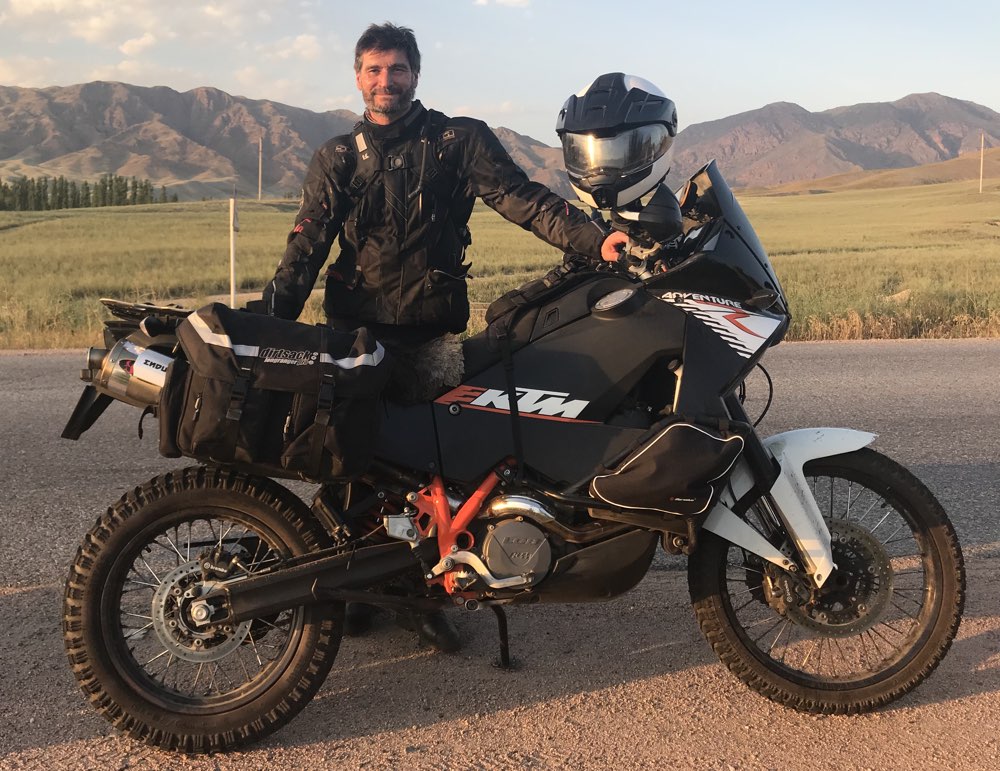
The first real test of the gear came about three days into the trip when we headed towards the mighty Lenin Peak. At over 7,000m it’s one of the highest mountains in the Pamirs and a popular climb. There’s a base camp for acclimatisation at 3,600m and getting to it involves a glorious 40km trail ride with several river crossings. Never overly technical, it was hugely entertaining and the only drama came as a couple of riders took an early bath on the widest river crossing. With nobody hurt we rode on beyond the base camp and continued to climb to around 3,800m. Veering off the trail and onto the plateau, we managed to pitch our tents at the very edge of the valley with the most amazing view of the Pamirs. With what’s arguably the best view ever from a tent, it made for a very memorable night. Even though it was perfectly calm when we pitched, I still rolled the KTM’s front wheel over one of the guy lines just in case the wind picked up overnight. I really didn’t want a sudden descent!
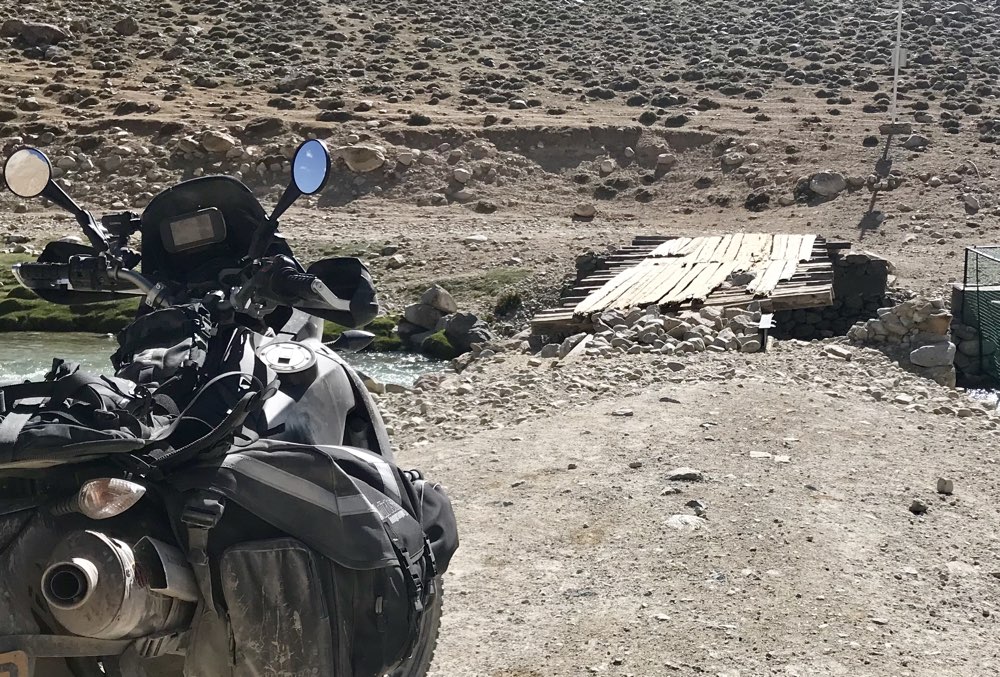
The Pamir Highway has hundreds of kilometres of corrugated washboard mud, and stone roads covered with golf ball-sized loose gravel. The only way to ride it is to pick up speed and find the natural pace for your bike. If you go too slow the vibrations are so severe it’s like riding a pneumatic drill and your vision will blur. Too fast and you’ll skitter around on the gravel and start to fishtail into a tank slapper. After more than a little trial and error I found the 990 would sit most happily at about 80kph. Despite the sometimes severe and prolonged vibration, never once did I have any bother with the panniers, which stayed firmly put throughout the journey – even when the KTM went airborne on several (not always intentional) occasions!
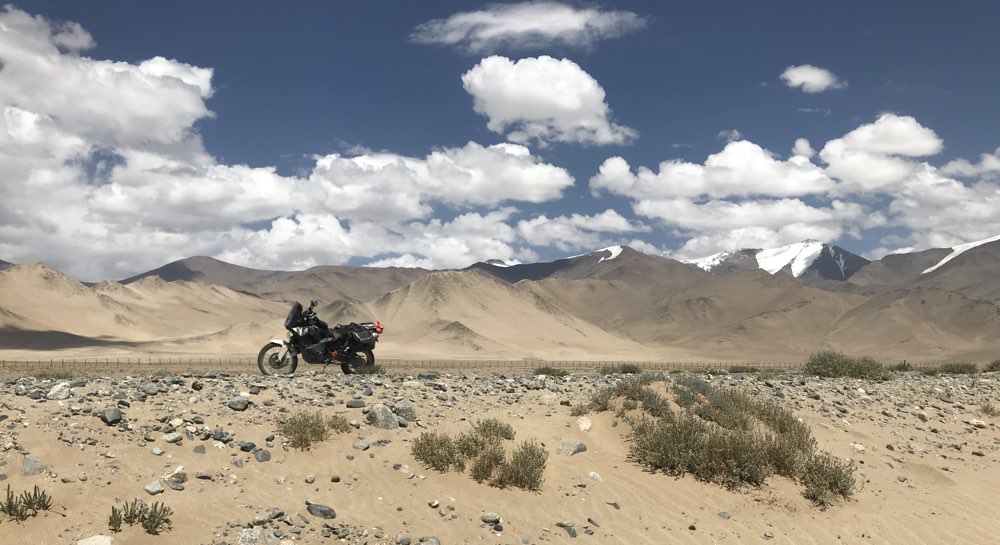
Thanks to the lack of road maintenance and the eroding effects of rain and ice (temperatures during the trip varied from a high of 43c to only just above freezing at altitude), the dust on the Pamir is incredible. If you’re riding with another bike, you either have to ride side by side or drop back at least a kilometre, otherwise you simply can’t see a thing. This meant that everything was covered in a thick layer of sticky grey dust. Other riders were reaching for the WD40 to try and get their zippers to work, but the Longranger Pros were immune to the problem.
In total I covered around 4,000km in a little over two weeks. If you have the chance, I can thoroughly recommend a visit – it really is two-wheeled heaven. The accommodation and food are basic, and sleep can be disturbed by altitude sickness, but the discomfort is all worth it. You have complete freedom to ride more or less anywhere you like, and the Pamiri people are so wonderfully hospitable and welcoming. It’s not just the children that wave and smile at you, everyone you meet seems genuinely delighted that you’ve made the effort to see their country. The camel trains and the armies of Alexander the Great may have been replaced by Chinese trucks and cyclists, but the mountains remain as majestic as ever.

